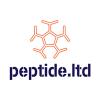Stumbled upon this while browsing. Looks interesting to me, sounds like it's got some potential. Thoughts?
ORG-26576 is an ampakine originally developed by Cortex Pharmaceuticals and then licensed to Organon International for development. In animal studies it has been shown to effectively potentiate AMPA receptor function, leading to increased BDNF release and enhanced neuronal differentiation and survival, as well as producing nootropic effects in standardised assays.[1][2][3][4][5][6] Development as an antidepressant has been halted due to a failed Phase II trial for major depressive disorder.[7]
https://en.wikipedia.org/wiki/ORG-26576
[1]. Jordan GR, et al. Regionally selective and dose-dependent effects of the ampakines Org 26576 and Org 24448 on local cerebral glucose utilisation
in the mouse as assessed by 14C-2-deoxyglucose autoradiography. Neuropharmacology. 2005 Aug;49(2):254-64.
[2]. Su XW, et al. Chronic treatment with AMPA receptor potentiator Org 26576 increases neuronal cell proliferation and survivalin adult rodent hippocampus. Psychopharmacology (Berl). 2009 Oct;206(2):215-22.
https://www.medchemexpress.com/Org-26576.html
**Forgive me for the terrible formatting. I'm not too familiar with formatting, as I haven't posted at length here yet.
Edited by Stephen Clark, 30 September 2017 - 06:39 AM.















































